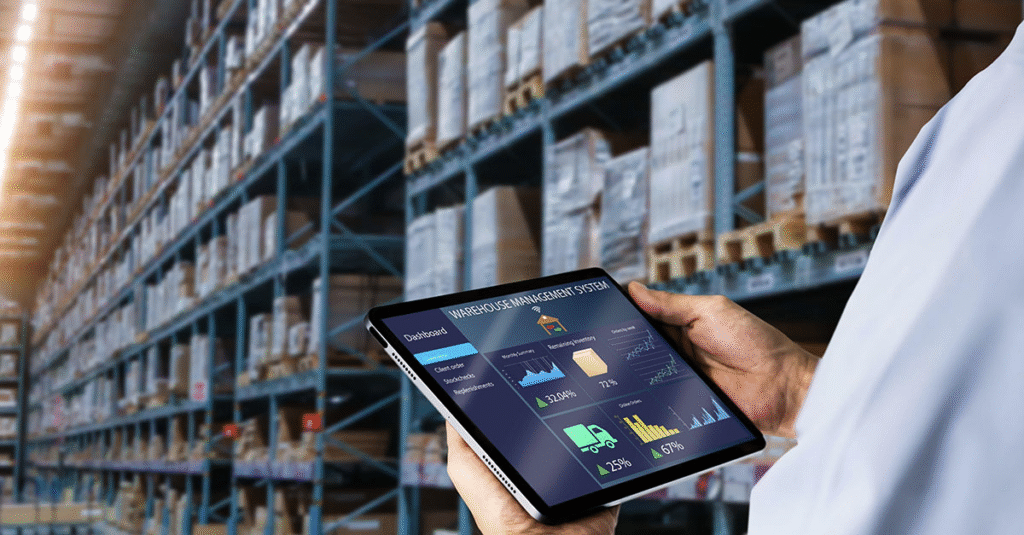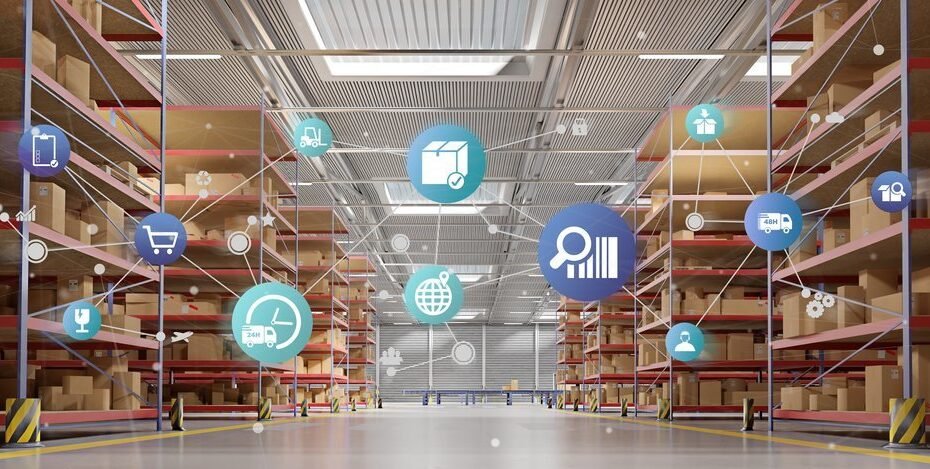Better planning, fewer surprises, and smarter business moves
Why Old-School Forecasting Isn’t Cutting It Anymore
Running a supply chain today is no joke. Between customer demands, shipping delays, global events, and market shifts — things can change overnight. For years, businesses used historical data to predict what to stock, when to order, and how much to ship.
That worked okay — until the world got a lot more unpredictable.
Now, those traditional methods just can’t keep up. They often lead to either empty shelves or piles of unsold inventory. And let’s be honest: both are bad for business.
Enter Machine Learning — A Smarter Way to Forecast
This is where machine learning steps in and changes the game.
Machine learning is improving supply chain forecasting by helping businesses make more accurate, real-time predictions. It analyzes tons of data, spots patterns humans might miss, and learns as it goes — so it keeps getting better.
It’s not just about guessing anymore. It’s about making data-driven decisions that actually work.
Let’s Break It Down: How ML Helps Supply Chains
1. Forecasting Demand in Real Time
Instead of using last year’s sales to predict next week’s needs, machine learning pulls in fresh data from:
- Online shopping trends
- Local news and events
- Social media buzz
- Weather forecasts
- Seasonal patterns
Real-life example:
A clothing brand sees a sudden spike in hoodie searches after an unexpected cold snap. Thanks to ML, they react quickly and ship inventory where it’s needed — before competitors even notice.
2. Managing Inventory Smarter

Having too much stock ties up money and warehouse space. Having too little means missed sales.
Machine learning helps you balance both by:
- Predicting what will sell and when
- Notifying you when to reorder
- Helping you avoid overstocking slow sellers
Simple result: Less waste, more profit.
3. Spotting Supplier Problems Before They Hit You
Machine learning can monitor your suppliers for:
- Shipping delays
- Quality issues
- Regional risks (like strikes or natural disasters)
Let’s say: Your main supplier is in a region facing a hurricane. ML picks up early warnings, giving you time to switch suppliers — saving your business from major delays.
4. Planning Better Delivery Routes
Moving stuff from A to B costs time and money. ML helps by analyzing:
- Traffic patterns
- Delivery times
- Fuel use
- Weather impacts
- Route history
Bonus: ML doesn’t just plan better routes — it learns from each trip and keeps improving.
Catching Weird Spikes or Errors Early
Imagine your system suddenly shows a 500% demand increase for rubber ducks. Is it real? Or a glitch?
Machine learning quickly flags unusual activity so you can:
- Investigate the cause
- Prevent fraud
- Fix data entry mistakes before they snowball
Real-World Case Studies: Machine Learning in Action
1. Amazon – Predictive Shipping at Scale
Amazon is one of the pioneers in using machine learning for supply chain forecasting. Their system doesn’t just react to customer orders — it predicts them. Amazon’s patented “anticipatory shipping” model uses ML to analyze browsing history, past purchases, and regional shopping trends.
- Impact: In some regions, predictive shipping cut average delivery times by up to 30%, giving Amazon a massive competitive edge.
- Takeaway: By predicting demand at a hyper-local level, Amazon ensures the right products are stocked at the right warehouses before customers even click “buy.”
2. Walmart – Reducing Food Waste with Smarter Forecasting
Walmart, the world’s largest retailer, has long struggled with perishable inventory. By implementing ML-driven demand forecasting, they optimized ordering for fresh produce, dairy, and bakery items.
- Impact: Walmart reduced food waste by nearly 10% across multiple U.S. stores, while keeping shelves stocked more consistently.
- Takeaway: ML not only boosts efficiency but also aligns with sustainability goals — reducing costs while cutting waste.
3. DHL – Optimizing Global Delivery Routes
Logistics giant DHL uses machine learning to improve last-mile delivery, one of the most expensive parts of shipping. Their ML models process data on traffic patterns, weather conditions, and delivery density.
- Impact: DHL reduced fuel consumption by 10–15% in test regions and improved on-time delivery rates significantly.
- Takeaway: ML-driven route planning creates a win-win — lower costs for the company and faster deliveries for customers.
4. Starbucks – Demand Forecasting with Weather & Events
Starbucks applies machine learning not only to supply chains but also to store-level demand forecasting. Their system factors in weather data, local holidays, and regional events.
- Impact: Stores avoid over-preparing food items on slow days and ramp up production when local events or heatwaves drive higher demand. This has helped Starbucks cut waste and boost sales.
- Takeaway: Even non-traditional supply chains (like coffee shops) benefit from ML by aligning production with local demand drivers.
Quick Visual: What Happens When ML Joins the Supply Chain
Traditional Forecasting vs. Machine Learning
| What It Does | Traditional Forecasting | Machine Learning |
| Uses current data | ❌ | ✅ |
| Adjusts to sudden changes | ❌ | ✅ |
| Spots hidden trends | ❌ | ✅ |
| Learns and improves over time | ❌ | ✅ |
| Gives more confident predictions | ❌ | ✅ |
Who’s Already Using It?
Big brands are already on board:
- Amazon uses ML to predict what you’ll order next and ships it to nearby warehouses in advance.
- Walmart uses ML to keep shelves stocked and cut down on wasted food.
- DHL optimizes delivery routes and timing with machine learning, improving both speed and cost-efficiency.
If they’re doing it, it’s probably worth paying attention to.
What’s Next in 2025 and Beyond?
Machine learning in supply chains is just getting started. Soon we’ll see:
- More automation, from inventory to shipping
- AI-powered forecasting tools that anyone can use
- IoT + ML combo, where smart sensors feed real-time data directly into models
- Fully autonomous supply chains, where systems adjust without waiting for human input
Businesses that adopt this early will have the edge. Those that don’t? They’ll play catch-up.
How Small Businesses Can Start with Plug-and-Play ML Forecasting Tools
Machine learning might sound like something only Amazon or Walmart can afford, but that’s no longer true. Today, small businesses can tap into plug-and-play forecasting tools that require no coding skills or data science team. These platforms come with built-in algorithms and easy dashboards — all you need to do is feed in your data.
Step 1: Collect the Right Data
Before anything, make sure your data is organized. Even simple records like:
- Sales history (by product and time period)
- Seasonal or promotional events
- Inventory levels
- Supplier delivery times
This information is the raw fuel ML tools need to make accurate predictions.
Step 2: Choose a User-Friendly Tool
Several cloud platforms now offer ML forecasting as a service:
- Amazon Forecast – Easy integration with spreadsheets and sales data. Helps predict demand by product, region, or time frame.
- Google Cloud Vertex AI – Offers automated forecasting models with drag-and-drop options.
- Microsoft Azure ML Studio – Beginner-friendly, with templates for demand and inventory forecasting.
- SAS Forecast Server – Known for retail and manufacturing businesses, provides advanced but simplified forecasting.
- Odoo AI (for SMEs) – An ERP platform with built-in ML forecasting for inventory and sales.
Step 3: Run a Pilot Project
Instead of transforming your whole supply chain overnight, start small. For example:
- Predict demand for your top 5 products over the next month.
- Use ML to set automated re-order alerts when stock runs low.
- Compare ML predictions with your traditional forecasts to measure improvement.
Step 4: Scale Up Gradually
Once you see results, expand ML forecasting across more product categories, locations, or even delivery planning. The beauty of these platforms is that they learn and improve over time — so your forecasts get sharper as more data flows in.
The Small Business Advantage
Unlike large corporations bogged down by complex legacy systems, small businesses can adopt ML tools quickly. With affordable subscription-based pricing, even a growing e-commerce store can start making smarter inventory and supply decisions without huge upfront investments.
Final Thoughts: Why This Matters

In today’s world, you need more than just good guesses — you need smart decisions backed by solid data.
Machine learning is improving supply chain forecasting in ways that help businesses stay ahead, save money, and serve customers better.
If you’re running a business — big or small — this tech isn’t just a “nice to have” anymore. It’s becoming a must-have.
Frequently Asked Questions (FAQ)
1. What is supply chain forecasting?
Answer:
Supply chain forecasting is the process of predicting demand, inventory needs, and supply logistics based on historical and current data. It helps companies plan how much to produce, order, and ship to meet customer needs.
2. How is machine learning different from traditional forecasting methods?
Answer:
Traditional methods use fixed formulas and past data. Machine learning (ML), on the other hand, uses large amounts of real-time data and adapts its predictions as patterns change. It continuously improves over time — making forecasts more accurate.
3. Why is machine learning useful in supply chains?
Answer:
Machine learning can:
- Spot demand changes early
- Predict delivery delays
- Suggest better inventory levels
- Plan smarter shipping routes
It saves money, reduces waste, and helps businesses react faster.
4. What kind of data does machine learning use to make supply chain predictions?
Answer:
ML can use data from:
- Sales history
- Weather conditions
- Supplier performance
- Social media trends
- Regional events
- Online searches and demand patterns
5. Which companies use ML for supply chain forecasting?
Answer:
Major brands like Amazon, Walmart, and DHL use machine learning to streamline their supply chains. They use it to manage inventory, forecast demand, and optimize shipping — often saving millions of dollars annually.
6. Can small businesses use machine learning too?
Answer:
Yes! There are now many affordable tools and platforms (like SAS, Amazon Forecast, or Google Cloud AI) that help small and mid-sized companies apply ML without needing a data science team.
7. How does ML improve demand forecasting specifically?
Answer:
ML looks at more than just past sales. It factors in real-time trends, holidays, promotions, customer behavior, and outside influences like weather or market news. This gives a more accurate prediction of what people will actually buy and when.
8. What are the risks or downsides of using ML in supply chains?
Answer:
Some risks include:
- Poor data quality leading to bad predictions
- High setup costs for custom solutions
- Over-reliance on automated decisions
That’s why human oversight and good data hygiene are still important.
9. Is machine learning replacing jobs in supply chains?

Answer:
Not exactly. ML is more about augmenting decision-making, not replacing people. It helps supply chain professionals do their jobs better and faster by giving them smarter insights.
10. What’s the future of ML in supply chain management?
Answer:
Expect more automation, real-time tracking, and self-learning systems. Over time, we’ll see smarter tools that:
- Auto-adjust supply plans
- Predict issues weeks in advance
- Recommend actions instantly based on new data
